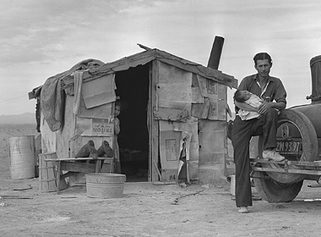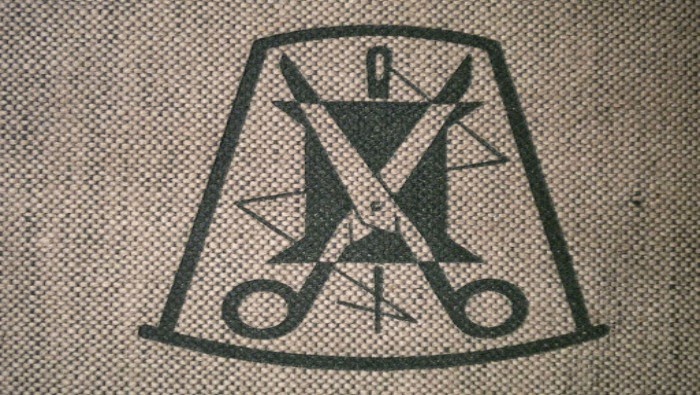 | ||
| Jean Harlow in a bias cut gown (Source) |
.jpg) |
| Fred Astaire and Ginger Rogers (Source) |
 |
| (Source) |
 |
| (Source) |
 |
| 1930's Soup kitchen for the unemployed (Source) |
It's understandable that movies of the time would provide an alternative to the troubles of daily life with glitz and glamour. Everything was shiny, from the floors of the ballrooms to the satin gowns that were usually draped around the ladies. Characters had housemaids and servants, and usually had nothing more to worry about than who they would bump into on the cruiseship to Europe.
Why the mini history lesson? Well, all of this was going through my mind when I decided to make the Sew Vera Venus Little Bias Dress:
This is a great pattern for a slinky, satin-y 1930's dress. But I didn't think I would have as much use for a satin dress, so I re-imagined it as something more everyday, with a touch of the mid-west.
I found this lovely cotton fabric at Goldhawk Rd on the recent Spring London blogger meet-up, and decided it was perfect for what I had in mind:
And here it is:
I was a grown-up and actually made a muslin for this dress (see this post); once I made some fitting adjustments, the dress went together really easily. Since most of it is cut on the bias I figured it would be a pain to put a lining in - trying to get the drape of the lining and the dress to match up would have been really difficult. (I'm not used to dresses being unlined, so I just wore a half slip which was just fine) To keep the insides neat and tidy, I used French seams throughout; to neaten the skirt frill and the armhole, I bound it with self-made bias binding:
 |
| Seam neatened with bias binding |
I even managed to find little mother of pearl buttons that matched the flowers in the fabric!
A few more details:
 |
| Back waist |
For some reason the frilly-ness of the sleeves doesn't really come across well in the photos, so you'll just have to believe me that they are super floaty and probably my favourite part of the dress.
The dress has a really summery, holiday feel to it - shame we don't have the weather to match here in London at the moment. But being inappropriately dressed has never stopped me from wearing a new outfit!
See you soon!




















